Rush: A Progressive Rock Odyssey Through Time
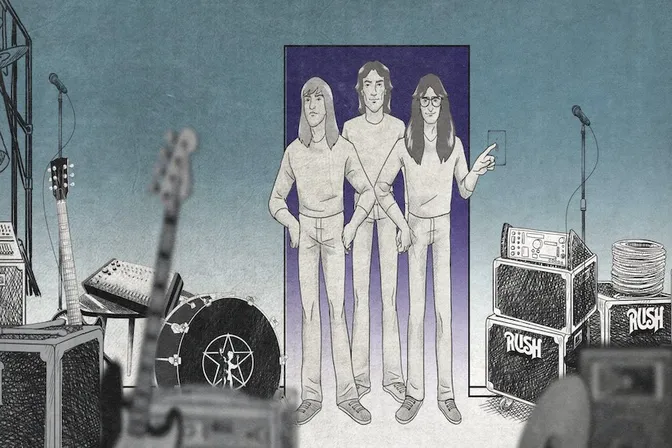 Photo Credit: Rush Website
Photo Credit: Rush WebsiteRush, the legendary Canadian progressive rock band, carved out a unique place in music history with their complex compositions, virtuosic performances, and evolving sound. Let’s explore Rush’s recording history, focusing on their producers, studios, and the equipment that helped create their iconic sound over four decades.
The Early Years (1974-1975)
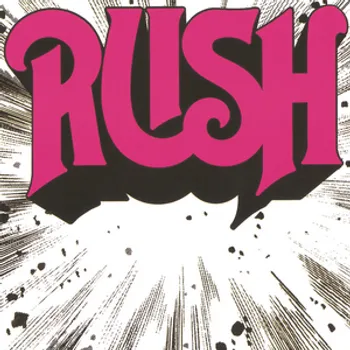
Rush (1974)
- Producer: Dave Stock
- Recorded: March 1973
- Location: Eastern Sound Studios, Toronto, Ontario, Canada
- Equipment: 16-track analog recorder, likely an Ampex MM1000
- Technique: Primarily live-off-the-floor recording to capture the band’s energy. Minimal overdubs were used to maintain the raw sound.
Rush’s self-titled debut album was born out of the band’s early days playing in Toronto’s vibrant club scene. Recorded in just a few days, the album captured the raw energy of their live performances. While it didn’t initially make waves commercially, tracks like “Working Man” gained traction on American radio, particularly in Cleveland, setting the stage for the band’s future success. This album represents the only Rush recording with original drummer John Rutsey, who left the band shortly after its release due to health issues and creative differences.
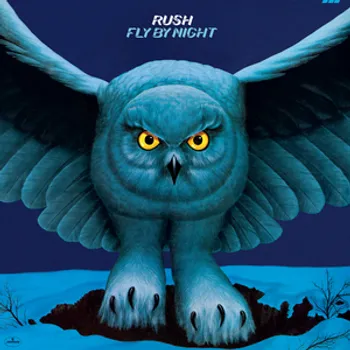
Fly by Night (1975)
- Producer: Terry Brown
- Recorded: December 1974 - January 1975
- Location: Toronto Sound Studios, Toronto, Ontario, Canada
- Equipment: 24-track analog recorder, likely a Studer A80
- Technique: More refined studio techniques, introduction of complex arrangements. Increased use of overdubs, especially for guitar parts.
“Fly by Night” marked a significant turning point for Rush. It was the first album to feature Neil Peart on drums and as the band’s primary lyricist. Peart’s arrival heralded a shift towards more complex compositions and thought-provoking lyrics. The title track became an early fan favorite, while “By-Tor and the Snow Dog” showcased the band’s emerging progressive tendencies. This album laid the foundation for Rush’s signature sound and thematic explorations that would define their career.
The Progressive Era (1976-1981)
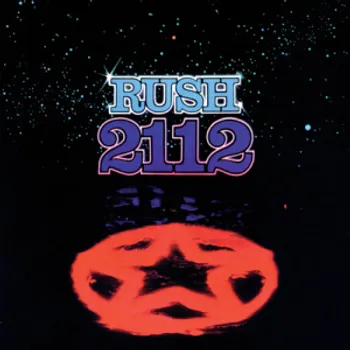
2112 (1976)
- Producer: Rush and Terry Brown
- Recorded: February 1976
- Location: Toronto Sound Studios, Toronto, Ontario, Canada
- Equipment: 24-track analog recorder, early synthesizers (likely ARP and Moog models)
- Technique: Conceptual storytelling, increased use of overdubs and layering. Multi-tracking of guitar parts to create a fuller sound.
“2112” was Rush’s make-or-break album. Following the commercial disappointment of “Caress of Steel,” the band faced pressure to adopt a more mainstream sound. Instead, they doubled down on their progressive leanings, crafting the epic 20-minute title track that blended sci-fi storytelling with intricate musicianship. The gamble paid off, with “2112” becoming their first US gold album. Its success allowed Rush creative freedom for years to come and solidified their status as progressive rock innovators.
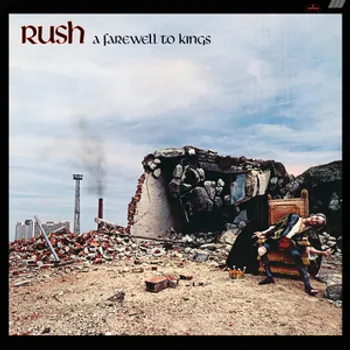
A Farewell to Kings (1977)
- Producer: Rush and Terry Brown
- Recorded: June - July 1977
- Location: Rockfield Studios, Wales
- Equipment: 24-track analog recorder, expanded use of synthesizers including Minimoog, bass pedals
- Technique: Incorporation of classical guitar, expanded use of synthesizers. Outdoor recording for natural ambience on tracks like “A Farewell to Kings”
Recorded in the idyllic setting of Rockfield Studios in Wales, “A Farewell to Kings” saw Rush expanding their sonic palette. The album opener showcased Alex Lifeson’s classical guitar skills, while “Xanadu” demonstrated the band’s ability to craft extended, multi-part epics. “Closer to the Heart” became one of their most accessible and enduring songs, receiving significant radio play. This album also marked the beginning of Rush’s use of synthesizers as a major component of their sound, a trend that would continue to evolve in subsequent releases.
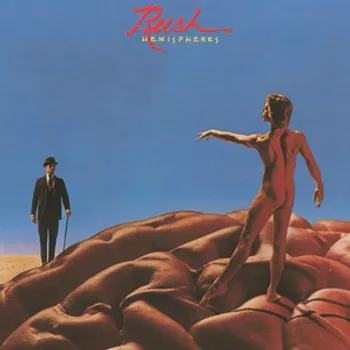
Hemispheres (1978)
- Producer: Rush and Terry Brown
- Recorded: June - July 1978
- Location: Rockfield Studios, Wales
- Equipment: 24-track analog recorder, Oberheim polyphonic synthesizer, Minimoog
- Technique: Complex layering and overdubs, particularly on the epic “Cygnus X-1 Book II: Hemispheres”. Expanded use of synthesizers for texture and atmosphere.
“Hemispheres” represented the pinnacle of Rush’s progressive rock ambitions. The album’s centerpiece, “Cygnus X-1 Book II: Hemispheres,” was a complex 18-minute suite that concluded the story begun on their previous album. The recording process was grueling, with the band pushing themselves to their technical and creative limits. While celebrated by fans, the demanding nature of creating and performing such intricate music led Rush to reconsider their approach for future albums. “La Villa Strangiato,” subtitled “An Exercise in Self-Indulgence,” showcased the band’s instrumental prowess and humor.
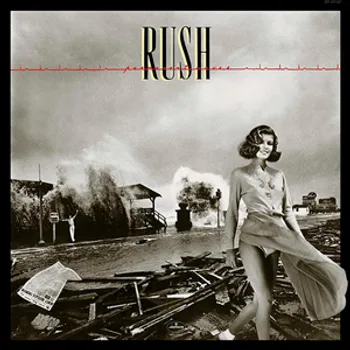
Permanent Waves (1980)
- Producer: Rush and Terry Brown
- Recorded: September - October 1979
- Location: Le Studio, Morin-Heights, Quebec, Canada
- Equipment: Neve console, 24-track analog recorder (likely Studer A80), early synthesizers including Oberheim polyphonic synth
- Technique: Blend of progressive rock with more concise song structures. Increased use of synthesizers, particularly in atmospheric parts. Experimentation with reggae-influenced rhythms.
With “Permanent Waves,” Rush began to streamline their sound without sacrificing complexity. The album struck a balance between progressive elements and more radio-friendly structures. “The Spirit of Radio” became an instant classic, celebrating the freedom of music while ironically becoming a radio hit itself. “Freewill” showcased the band’s philosophical lyrical bent and musical virtuosity. This album marked Rush’s first significant breakthrough into the mainstream, reaching the top five in the US and UK charts.
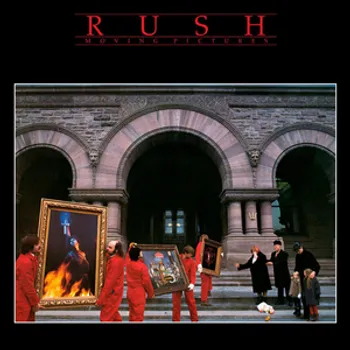
Moving Pictures (1981)
- Producer: Rush and Terry Brown
- Recorded: October - November 1980
- Location: Le Studio, Morin-Heights, Quebec, Canada
- Equipment: SSL 4000 E Series console, Studer A80 24-track analog recorder, Oberheim OB-X synthesizer
- Technique: Refined production, perfect balance of progressive elements and radio-friendly sound. Extensive use of automation for complex mixes.
- Awards: Billboard Music Awards 1981: Top Rock Track for “Tom Sawyer”
“Moving Pictures” is widely regarded as Rush’s masterpiece, perfecting the balance between progressive rock complexity and accessible melodies. The album spawned several of the band’s most iconic songs, including “Tom Sawyer,” “Limelight,” and the instrumental tour-de-force “YYZ.” The production was crisp and detailed, setting a new standard for rock recording. “Moving Pictures” became Rush’s highest-selling album, cementing their status as rock superstars. Its influence extended beyond progressive rock, impacting the emerging new wave and even hip-hop genres.
The Synthesizer Period (1982-1989)
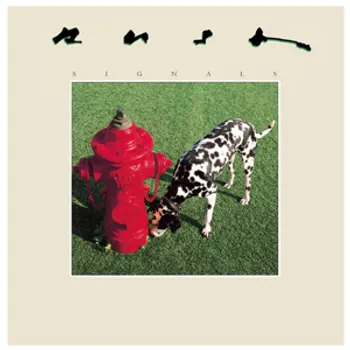
Signals (1982)
- Producer: Rush and Terry Brown
- Recorded: April - July 1982
- Location: Le Studio, Morin-Heights, Quebec, Canada
- Equipment: SSL 4000 E Series console, Oberheim OB-X and OB-Xa synthesizers, PPG Wave 2.2, likely Studer A80 24-track recorder
- Technique: Heavy use of synthesizers, exploration of new wave influences. Increased use of MIDI for synchronization of electronic instruments.
“Signals” marked a significant shift in Rush’s sound, embracing the synthesizer-driven new wave movement of the early 1980s. The lead single “New World Man” became their highest-charting US single, while “Subdivisions” resonated deeply with fans, addressing suburban conformity and alienation. This album polarized some longtime fans but also attracted a new audience. The increased use of synthesizers and more succinct songwriting showcased the band’s willingness to evolve and take risks. “Signals” also marked the end of Rush’s long collaboration with producer Terry Brown, as the band sought to further explore new sonic territories.
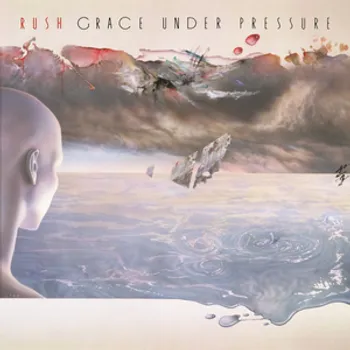
Grace Under Pressure (1984)
- Producer: Rush and Peter Henderson
- Recorded: November 1983 - March 1984
- Location: Le Studio, Morin-Heights, Quebec, Canada
- Equipment: SSL console, extensive use of synthesizers including PPG Wave 2.3, Yamaha DX7
- Technique: Heavy emphasis on synthesizers and electronic textures. Use of sequencers for more rhythmic synth parts.
With “Grace Under Pressure,” Rush continued their exploration of synthesizer-heavy arrangements while tackling darker, more serious themes. The album’s lyrics addressed nuclear threat (“Distant Early Warning”), the Holocaust (“Red Sector A”), and environmental concerns (“The Body Electric”). Musically, the band embraced a colder, more atmospheric sound that reflected the album’s often bleak subject matter. Despite the shift in style, the album was well-received, particularly in the UK where it reached the top 5. “Grace Under Pressure” showcased Rush’s ability to evolve their sound while maintaining their intellectual and emotional depth.
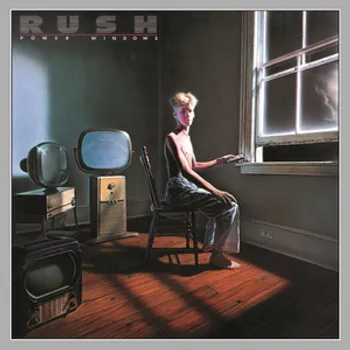
Power Windows (1985)
- Producer: Peter Collins
- Recorded: April - August 1985
- Locations: The Manor Studio, Oxfordshire, England; SARM East Studios, London, England; Musikladen, Frankfurt, Germany
- Equipment: SSL console (likely 4000 E or G Series), Fairlight CMI, various digital synthesizers (possibly including Yamaha DX7, Roland Jupiter-8)
- Technique: Layered synthesizer textures, increased use of sampling and sequencing. Extensive use of the Fairlight CMI for sound design and arrangement.
“Power Windows” saw Rush fully embracing the possibilities of MIDI technology and modern production techniques. The album featured lush, layered arrangements with Geddy Lee’s synthesizers often taking center stage. Songs like “The Big Money” and “Marathon” became fan favorites, blending complex musicianship with arena-ready choruses. Lyrically, the album explored themes of power in various forms - political, emotional, and technological. The polished production and increased use of synthesizers pushed Rush further from their hard rock roots, but demonstrated their mastery of 80s rock production techniques.
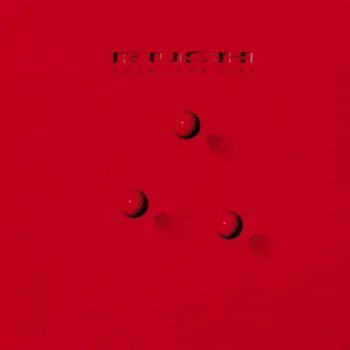
Hold Your Fire (1987)
- Producer: Peter Collins and Rush
- Recorded: February - May 1987
- Locations: The Manor Studio, Oxfordshire; Ridge Farm Studio, Surrey; AIR Studios, Montserrat; McClear Place Studios, Toronto
- Equipment: SSL console, Fairlight CMI Series III, various digital synthesizers
- Technique: Extensive use of MIDI sequencing, layered synthesizer arrangements. Integration of world music influences.
“Hold Your Fire” continued Rush’s synthesizer-dominated phase but with a more balanced approach between electronic and traditional rock elements. The album featured guest appearances, including Aimee Mann on vocals for “Time Stand Still,” which became one of Rush’s most popular songs of the era. The production was sleek and radio-friendly, with tracks like “Force Ten” and “Prime Mover” showcasing the band’s ability to craft complex yet catchy rock songs. While some critics felt the band had strayed too far from their roots, “Hold Your Fire” demonstrated Rush’s commitment to musical growth and experimentation.
The Return to Rock (1989-2007)
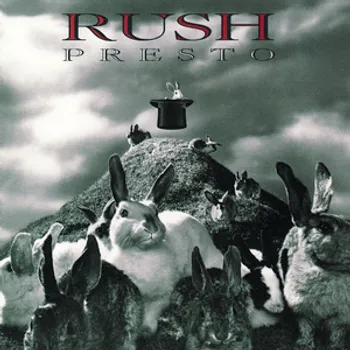
Presto (1989)
- Producer: Rupert Hine
- Recorded: June - August 1989
- Location: Le Studio, Morin-Heights, Quebec, Canada
- Equipment: SSL console, mix of analog and digital recording, reduced emphasis on synthesizers
- Technique: More guitar-driven approach, cleaner production style. Synthesizers used more for texture than lead parts.
“Presto” marked the beginning of Rush’s gradual return to a more guitar-centric sound. Working with producer Rupert Hine, the band stripped back the layers of synthesizers, allowing Alex Lifeson’s guitar work to shine through more prominently. Songs like “Show Don’t Tell” and the title track balanced their recent pop sensibilities with a renewed focus on rock dynamics. Lyrically, Neil Peart continued to explore social and personal themes with his characteristic depth. While not as commercially successful as their mid-80s work, “Presto” signaled a new direction for Rush as they entered the 1990s.
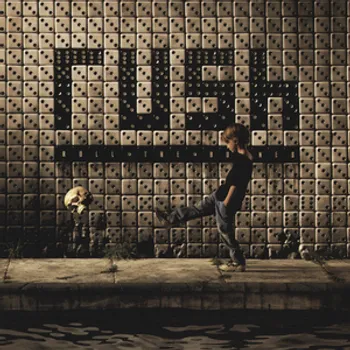
Roll the Bones (1991)
- Producer: Rupert Hine
- Recorded: January - March 1991
- Location: Le Studio, Morin-Heights, Quebec, Canada
- Equipment: SSL console, mix of analog (likely Studer A800) and early digital recording (possibly Sony PCM-3348)
- Technique: Blend of rock instrumentation with modern production, experiments with rap. Likely early use of digital editing for vocal comping.
With “Roll the Bones,” Rush continued their return to a more straightforward rock sound while still incorporating elements of their synthesizer period. The title track famously featured a rap section, showcasing the band’s willingness to experiment with contemporary styles. “Dreamline” became a rock radio hit, its driving rhythm and soaring chorus exemplifying Rush’s evolving 90s sound. The album’s themes centered around chance and fortune, with Peart’s lyrics exploring both personal and cosmic perspectives on luck and fate. “Roll the Bones” helped Rush transition into the alternative rock-dominated 1990s while maintaining their musical identity.
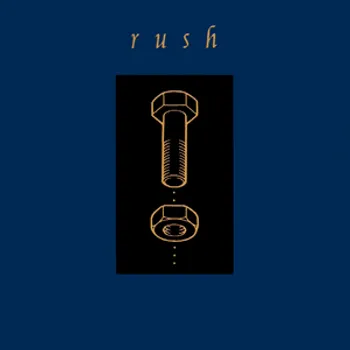
Counterparts (1993)
- Producer: Peter Collins and Rush
- Recorded: April - June 1993
- Location: Le Studio, Morin-Heights, Quebec, Canada
- Equipment: SSL console, increased use of vintage gear and analog recording techniques
- Technique: Return to a more raw, guitar-driven sound. Minimal use of synthesizers, focus on power trio dynamics.
“Counterparts” saw Rush embracing a heavier, more guitar-driven sound that aligned with the grunge and alternative rock movements of the early 90s. The lead single “Stick It Out” showcased this harder edge, becoming a hit on rock radio. The album explored themes of opposition and duality, both in its lyrics and in the interplay between instruments. Songs like “Nobody’s Hero” addressed social issues with Peart’s characteristic thoughtfulness. “Counterparts” was well-received by critics and fans alike, appreciated for its return to a more robust rock sound while maintaining Rush’s progressive elements.
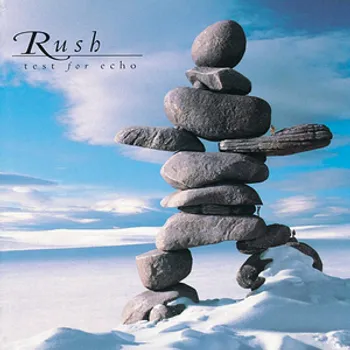
Test for Echo (1996)
- Producer: Peter Collins and Rush
- Recorded: January - March 1996
- Location: Bearsville Studios, Woodstock, New York
- Equipment: SSL console, mix of analog and digital recording
- Technique: Emphasis on live performance in the studio. Incorporation of alternative rock influences.
“Test for Echo” continued Rush’s 1990s renaissance, featuring a raw, stripped-down sound that emphasized the band’s power trio roots. The album was notable for Neil Peart’s rhythmic reinvention, having studied jazz drumming with Freddie Gruber. This new approach brought a looser, more fluid feel to Rush’s typically precise rhythms. Lyrically, the album touched on themes of modern alienation and the search for meaning in an increasingly digital world. While not as commercially successful as their earlier works, “Test for Echo” showcased a band still willing to challenge themselves creatively after more than two decades together.
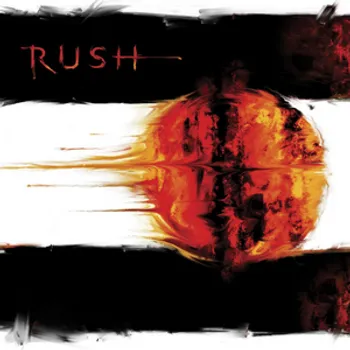
Vapor Trails (2002)
- Producer: Paul Northfield
- Recorded: January - November 2001
- Location: Reaction Studios, Toronto, Ontario, Canada
- Equipment: Pro Tools (likely version 5), minimal use of keyboards, focus on guitar rigs
- Technique: Raw, guitar-driven sound, minimal overdubs. Heavy use of digital editing and comping in Pro Tools.
“Vapor Trails” marked Rush’s return after a six-year hiatus following personal tragedies in Neil Peart’s life. The album saw the band adopting a heavy, aggressive sound with virtually no synthesizers, focusing instead on layered guitars and intricate drum work. Songs like “One Little Victory” and “Earthshine” showcased this raw, energetic approach. Lyrically, the album dealt with themes of loss, resilience, and renewal, reflecting Peart’s personal journey. While initially criticized for its compressed production, “Vapor Trails” was celebrated by fans as a triumphant comeback for the band.
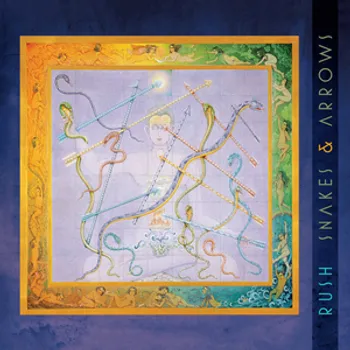
Snakes & Arrows (2007)
- Producer: Nick Raskulinecz
- Recorded: November 2006 - December 2006
- Location: Allaire Studios, Shokan, New York
- Equipment: Neve console, Pro Tools HD, blend of vintage and modern gear
- Technique: Focus on capturing live performances. Use of acoustic instruments for added texture. Minimal editing to preserve natural feel.
“Snakes & Arrows” saw Rush working with producer Nick Raskulinecz, known for his work with Foo Fighters and Alice in Chains. The album featured a return to more complex, progressive compositions while maintaining the heavy guitar sound of “Vapor Trails.” Songs like “Far Cry” and “The Larger Bowl” showcased the band’s ability to blend intricate musicianship with memorable melodies. Lyrically, Peart explored themes of faith, reason, and the human experience in the modern world. “Snakes & Arrows” was well-received by critics and fans, demonstrating that Rush could still create vital, relevant music three decades into their career.
The Final Chapter (2007-2015)
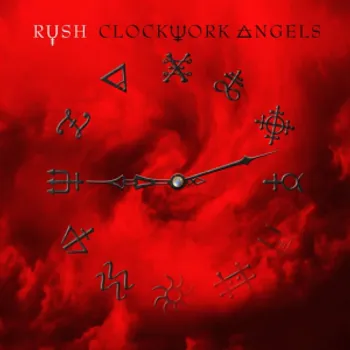
Clockwork Angels (2012)
- Producer: Nick Raskulinecz and Rush
- Recorded: April 2010 - December 2011
- Locations: Blackbird Studios, Nashville, Tennessee, USA; Revolution Recording, Toronto, Ontario, Canada
- Equipment: Combination of analog and digital recording, Pro Tools HD, vintage and modern outboard gear
- Technique: Concept album with cohesive narrative, blend of hard rock and progressive elements. Likely used a hybrid approach of recording to analog tape then transferring to Pro Tools for editing and mixing.
- Awards: Juno Awards 2013: Rock Album of the Year for “Clockwork Angels”
“Clockwork Angels,” Rush’s nineteenth and final studio album, was a fitting capstone to their illustrious career. A full-fledged concept album, it told a steampunk-inspired story of a young man’s quest through a world of chaos and order. Musically, it combined the heaviness of their recent work with the progressiveness of their 70s output, creating a sound that was both familiar and fresh. Standout tracks like “The Wreckers” and “The Garden” showcased the band’s enduring ability to craft complex yet emotionally resonant music. “Clockwork Angels” received critical acclaim and was accompanied by a novelization co-written by Neil Peart, expanding the album’s narrative. It served as a triumphant final statement from one of rock’s most enduring and influential bands.
Famous Mixing Techniques & Approaches
- Spatial Separation in Stereo Field
- Particularly evident in albums like “Moving Pictures”
- Instruments were carefully placed in the stereo field to create a wide, immersive soundstage
- Example: Alex Lifeson’s guitar often panned hard left or right, with Geddy Lee’s bass centered
- Layered Synthesizer Textures
- Prominent in their 80s albums like “Signals” and “Power Windows”
- Multiple synth tracks were carefully EQ’d and panned to create rich, atmospheric sounds without muddying the mix
- Drum Mixing Techniques
- Neil Peart’s complex drum parts required innovative approaches
- Use of gated reverb on snare drums, particularly in the 80s
- Careful mic placement and mixing to capture the nuances of Peart’s extensive kit
- Bass and Kick Drum Separation
- Geddy Lee’s bass and Neil Peart’s kick drum were carefully EQ’d to occupy distinct frequency ranges
- This allowed for clarity in the low end, even in complex arrangements
- Vocal Treatment
- Geddy Lee’s distinctive voice was often treated with slight delay and reverb
- In later albums, backing vocals were carefully layered to create depth without overwhelming the lead
- Dynamic Range Preservation
- Especially in their earlier albums, Rush maintained a wide dynamic range
- This approach changed somewhat in the late 90s and 2000s, following industry trends towards louder mixes
- Use of Automation
- Starting with “Moving Pictures,” extensive use of console automation allowed for complex, evolving mixes
- This technique was particularly important for their longer, multi-part compositions
- Blending of Electronic and Acoustic Elements
- In albums like “Power Windows” and “Hold Your Fire,” careful mixing was required to blend electronic drums and percussion with acoustic kit
- Synthesizers were mixed to complement rather than compete with guitar parts
- Guitar Layering Techniques
- Multiple guitar tracks were often used to create thick, harmonically rich sounds
- Careful EQ and panning were employed to maintain clarity in dense arrangements
- Ambient Miking Techniques
- Use of room mics to capture the natural ambience of the recording space
- This was particularly notable in albums recorded at Le Studio in Quebec
- Minimal Compression Approach
- In many of their recordings, Rush used minimal compression on individual tracks
- This preserved dynamics and allowed for a more natural, punchy sound
- Experimentation with Effects
- Use of flanging, phasing, and chorus effects, particularly on guitar and synthesizer parts
- These effects were often automated to create evolving soundscapes
- Clarity in Complex Arrangements
- Rush’s intricate compositions required careful mixing to ensure each element could be heard
- Frequency carving and selective use of effects were employed to achieve this clarity
Famous Quotes About Music and Musicianship
Neil Peart on Creativity:
“The highest purpose of art is to inspire. What else can you do? What else can you do for anyone but inspire them?”
Geddy Lee on Musicianship:
“The more you recognize and express gratitude for the things you have, the more things you will have to express gratitude for.”
Alex Lifeson on Guitar Playing:
“I think that’s what really a substantial work is, it’s forever. It’s the truth now and it was the truth then, and it will be the truth tomorrow.”
Neil Peart on Drumming:
“The real test of a musician is live performance. It’s one thing to spend a long time learning how to play well in the studio, but to do it in front of people is what keeps me coming back to touring.”
Geddy Lee on Bass Playing:
“I’ve always liked to be the kind of bass player who can play whatever the song requires.”
Neil Peart on Lyrics:
“The way I write is very much without a goal. I start from a phrase, a two-line phrase that will lead me on to another two-line phrase. It’s a kind of pattern building.”
Alex Lifeson on Collaboration:
“When we start to write, we don’t think about themes or concepts. We just write music that moves us.”
Geddy Lee on Musical Evolution:
“You have to be true to yourself and your musical vision. People have known me well for a long time, so I’ve grown and changed, and I’ve been vulnerable. And I’ve had periods of intense hyper-creativity.”
Neil Peart on Perfectionism:
“I’ve long believed that good drumming does not draw attention to itself.”
Alex Lifeson on Longevity in Music:
“We’ve managed to have a long career that’s been meaningful and successful. Putting out a constant stream of music that’s inspired is not easy.”
Geddy Lee on Musical Integrity:
“We’ve always approached our music-making with a lot of integrity and a lot of care.”
Neil Peart on Practice:
“Stamina is the force that drives the drumming; it’s not really a sprint.”
Alex Lifeson on Instrumental Music:
“Sometimes, you express things without words better than you can with words.”
Geddy Lee on Rush’s Approach:
“We’ve never been a trendy band to look at. We’ve always been a musical band to listen to.”
Neil Peart on Musical Growth:
“The real honor is not in being first, but in being the best.”
Additional Awards and Honors
Awards:
Grammy Awards 2010: Best Rock Instrumental Performance for “Malignant Narcissism”
Juno Awards:
- 1975: Most Promising Group of the Year
- 1978-1983, 1985-1986, 1990, 1992, 1994: Group of the Year (11 times)
Canadian Music Hall of Fame: Inducted in 1994
Rock and Roll Hall of Fame: Inducted in 2013
Officer of the Order of Canada:
- Geddy Lee and Alex Lifeson inducted in 1996
- Neil Peart inducted in 1997
Governor General’s Performing Arts Award for Lifetime Artistic Achievement: Received in 2012
Billboard Music Awards 1974: Top New Artist
Classic Rock Roll of Honour Awards 2013: Living Legends Award
SOCAN Awards: Multiple awards for songwriting achievements
Star on the Hollywood Walk of Fame: Received in 2010
Allan Waters Humanitarian Award: Received at the 2015 Juno Awards
Legacy and Impact
Rush’s journey through nearly five decades of music-making left an indelible mark on the rock landscape. Their willingness to evolve and experiment, coupled with their unwavering commitment to musical integrity, set them apart in an industry often driven by trends.
Musical Innovation
Throughout their career, Rush consistently pushed the boundaries of rock music. From the complex time signatures and extended compositions of their progressive era to their embrace of synthesizers in the 1980s, the band never shied away from musical challenges. Their ability to balance technical prowess with emotional resonance inspired countless musicians across various genres.
Lyrical Depth
Neil Peart’s lyrics elevated Rush’s music beyond mere instrumentals. His explorations of philosophy, science fiction, social issues, and personal struggles provided fans with material for deep contemplation. This intellectual approach to songwriting set a high bar for rock lyricism and attracted a devoted fanbase that appreciated music that engaged both the mind and the emotions.
Technical Mastery
Each member of Rush was renowned for their instrumental skills. Geddy Lee’s complex bass lines and ability to simultaneously play keyboards and sing, Alex Lifeson’s innovative guitar work, and Neil Peart’s legendary drumming all set new standards in rock musicianship. Their live performances, known for their precision and energy, became the stuff of legend.
Production and Sound
Rush’s attention to sonic detail in the studio was meticulous. From the analog warmth of their early recordings to the digital precision of their later work, each album was a carefully crafted sonic experience. Their willingness to embrace new recording technologies and techniques kept their sound fresh and relevant across decades.
Cultural Impact
Beyond their musical contributions, Rush became cultural icons, especially in their native Canada. Their success paved the way for other Canadian artists on the international stage. The band’s integrity, work ethic, and longevity made them role models not just for aspiring musicians, but for anyone pursuing excellence in their field.
Influence on Future Generations
Rush’s influence can be heard in a wide range of musical genres, from progressive metal to alternative rock. Bands like Dream Theater, Tool, and Coheed and Cambria have cited Rush as a major influence. Even artists in disparate genres like hip-hop have sampled Rush’s music, testament to its enduring appeal and versatility.
Final Thoughts
Rush’s recording history is a testament to the power of artistic integrity and continuous evolution. From their humble beginnings in Toronto’s club scene to their status as rock legends, the band never lost sight of their musical vision. Each album represented a snapshot of where the band was at that moment, reflecting their growth as musicians and as individuals.
Their approach to recording, always seeking to push boundaries while maintaining the highest standards of musicianship, set a benchmark in the industry. Whether working with long-time collaborators like Terry Brown or bringing in fresh perspectives with producers like Nick Raskulinecz, Rush always sought to create something new and exciting.
As we look back on their discography, from the raw energy of their self-titled debut to the conceptual brilliance of “Clockwork Angels,” we see a band that never stopped growing, never stopped challenging themselves and their audience. Rush’s legacy is not just in the music they created, but in the example they set for artistic integrity, technical excellence, and the courage to follow one’s creative vision.
Their induction into the Rock and Roll Hall of Fame in 2013 was a fitting recognition of their contributions to music. Even after retiring from touring in 2015 and the passing of Neil Peart in 2020, Rush’s music continues to inspire and influence new generations of musicians and fans.
In the end, Rush’s recording history is more than just a collection of albums – it’s a chronicle of rock music’s evolution over nearly half a century, told through the work of three extraordinarily talented and dedicated musicians who never lost their passion for pushing the boundaries of what rock music could be.
Back